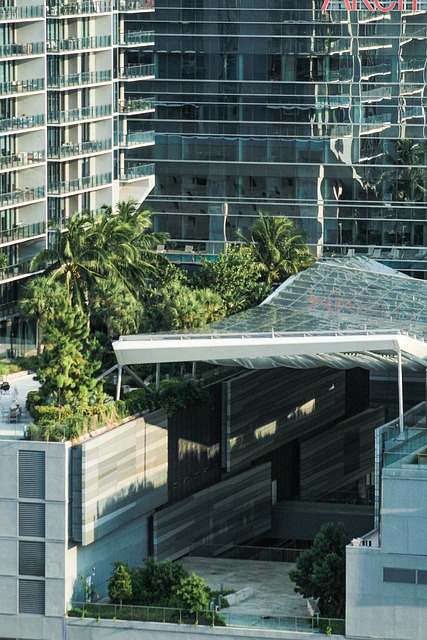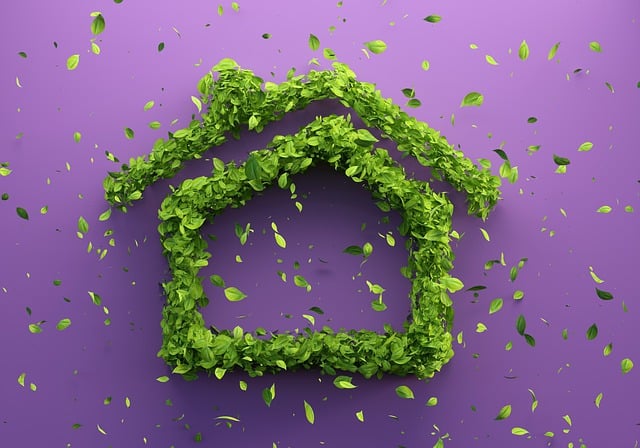Eco-friendly plumbing combines low-flow fixtures, tankless heaters, rainwater harvesting, and smart monitoring for significant water and energy savings. These practices, using sustainable materials, reduce environmental impact while lowering utility bills. Tankless heaters, integrated with rainwater systems and smart tech, offer optimal resource use and a smaller carbon footprint.
Looking to update your plumbing for a greener future? Discover the top eco-friendly practices that go beyond basic conservation. From installing low-flow fixtures to exploring rainwater harvesting and tankless heaters, this guide explores sustainable materials and smart monitoring technologies. Embrace a new era of eco-conscious living with these efficient solutions, ensuring a reduced environmental footprint without compromising comfort or performance.
- Understanding Eco-Friendly Plumbing: The Shift Towards Sustainability
- Low-Flow Fixtures: Reducing Water Usage and Conserving Resources
- Tankless Heaters: Efficient Hot Water Solutions for a Greener Home
- Rainwater Harvesting and Smart Monitoring: Maximizing Sustainable Plumbing Practices
Understanding Eco-Friendly Plumbing: The Shift Towards Sustainability

In today’s world, there’s a growing awareness of the impact our choices have on the environment. This shift towards sustainability extends to every aspect of our homes, including plumbing. Eco-friendly plumbing isn’t just about reducing water consumption; it involves transitioning to sustainable materials and practices that minimize harm to the planet. One significant step is understanding the importance of non-toxic sealants and fixtures in creating a greener home.
Low-flow fixtures and tankless heaters are examples of smart, eco-conscious innovations. They reduce energy usage and water wastage without compromising comfort or convenience. Additionally, rainwater harvesting systems collect and reuse this natural resource for various purposes, further easing the burden on municipal water supplies. With smart monitoring technologies, homeowners can track their water usage and identify areas for improvement, making their plumbing practices even more efficient and environmentally friendly.
Low-Flow Fixtures: Reducing Water Usage and Conserving Resources

Low-flow fixtures play a pivotal role in modern eco-friendly plumbing practices, offering an efficient solution to reduce water usage and conserve valuable resources. By incorporating these innovative designs into everyday fixtures like faucets and showerheads, homeowners can significantly lower their environmental impact. The key lies in their advanced technology, which optimizes water delivery without compromising performance. This means you enjoy the same level of comfort and cleanliness while using far less water—a significant benefit for both your utility bills and the planet.
Beyond low-flow fixtures, other sustainable solutions like tankless heaters and rainwater harvesting systems contribute to a comprehensive eco-friendly plumbing strategy. Tankless heaters, for instance, heat water on demand, eliminating the energy waste associated with keeping a hot water tank constantly filled. Rainwater harvesting systems capture and reuse this precious resource, further reducing reliance on municipal supplies. When combined with smart monitoring technologies, these sustainable materials enable users to track their water usage patterns, fostering conscious consumption habits.
Tankless Heaters: Efficient Hot Water Solutions for a Greener Home

Many homeowners are turning to tankless heaters as part of their commitment to eco-friendly plumbing. These efficient hot water solutions offer numerous benefits, aligning perfectly with the push for sustainable materials and reduced environmental impact. Unlike traditional tank-based systems, tankless heaters only heat water when needed, significantly cutting down on energy consumption and water wastage – a key aspect of low-flow fixtures.
By eliminating the constant heating and storage of water, tankless heaters can significantly lower utility bills. Moreover, they can be integrated with rainwater harvesting systems to further enhance their environmental friendliness. With modern smart monitoring technologies, homeowners can track their hot water usage, ensuring even greater efficiency. This data-driven approach allows for conscious adjustments in water consumption habits, contributing to a greener home and a smaller carbon footprint.
Rainwater Harvesting and Smart Monitoring: Maximizing Sustainable Plumbing Practices

Rainwater harvesting and smart monitoring are two innovative practices that complement the use of non-toxic plumbing sealants in promoting eco-friendly plumbing. By harnessing the power of rainwater, homeowners can significantly reduce their reliance on conventional water supply sources, thereby minimizing environmental impact and promoting sustainability. Rainwater harvesting systems collect and store rainwater for various household uses, from irrigation to flushing toilets, effectively reducing water consumption and associated energy costs.
Smart monitoring technologies further enhance sustainable plumbing practices by providing real-time data on water usage patterns. These advanced systems can detect leaks, optimize water pressure, and even schedule tankless heaters for efficient heating without wasting energy. Integrating low-flow fixtures with smart monitoring ensures that every drop of water is used effectively, maximizing the benefits of rainwater harvesting and promoting a culture of responsible water consumption.
